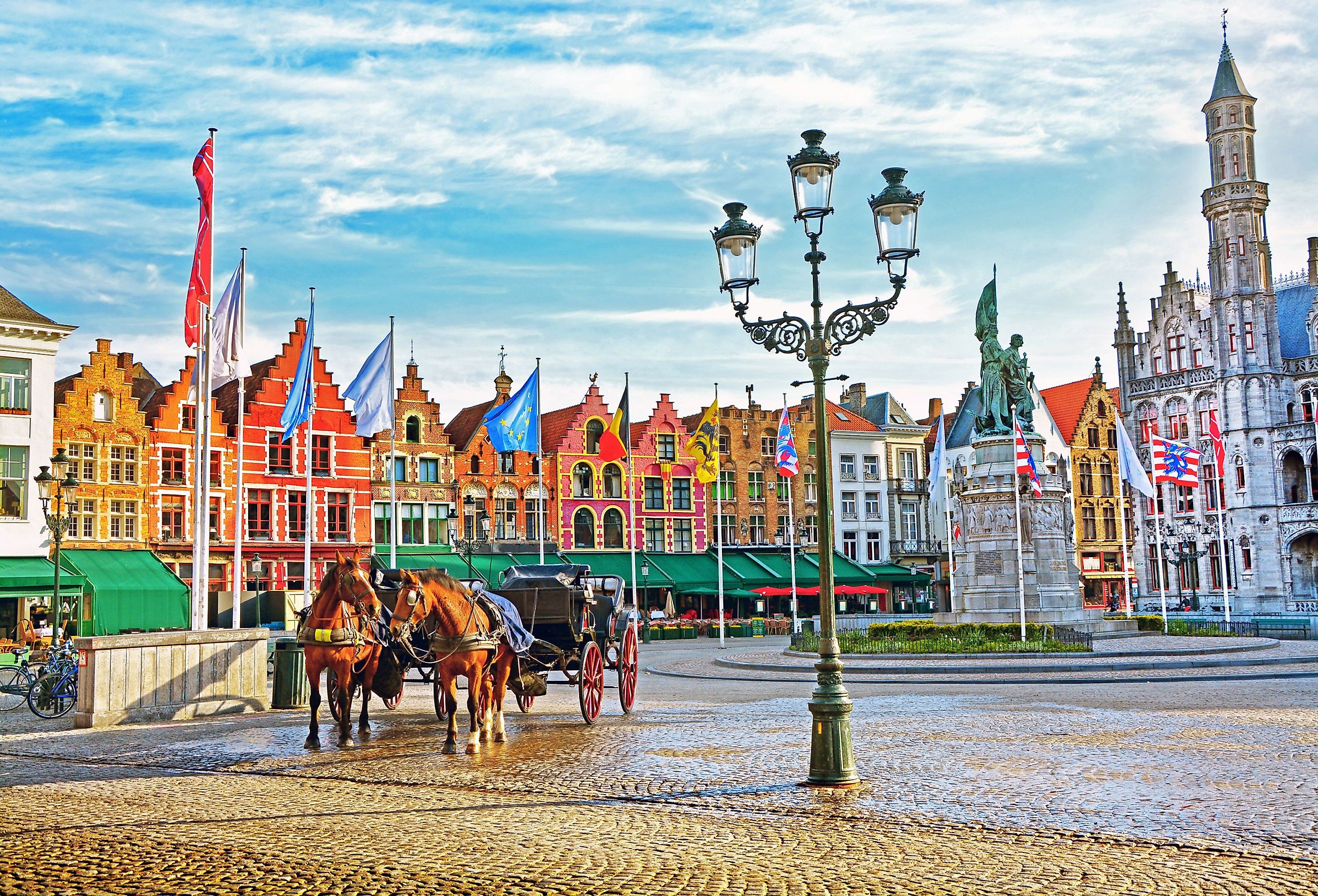
6 Wealthiest Cities in Medieval Europe
Throughout history, cities have been an important center for human development. They connect people and are an opportunity for innovation, politics, and culture. Often cities are the main drivers of economic growth in a country, accounting for more than 80% of GDP.
Today, wealthy cities have modern skyscrapers, fantastic infrastructure, and economic growth. While cities can be rich in terms of wealth and how many billionaires they host, other factors, such as resources, and skills a city has are important factors in wealth. During Medieval times cities close to the sea had an advantage for trade and tended to be wealthier. Here are some of the wealthiest cities in Medieval Europe.
Constantinople
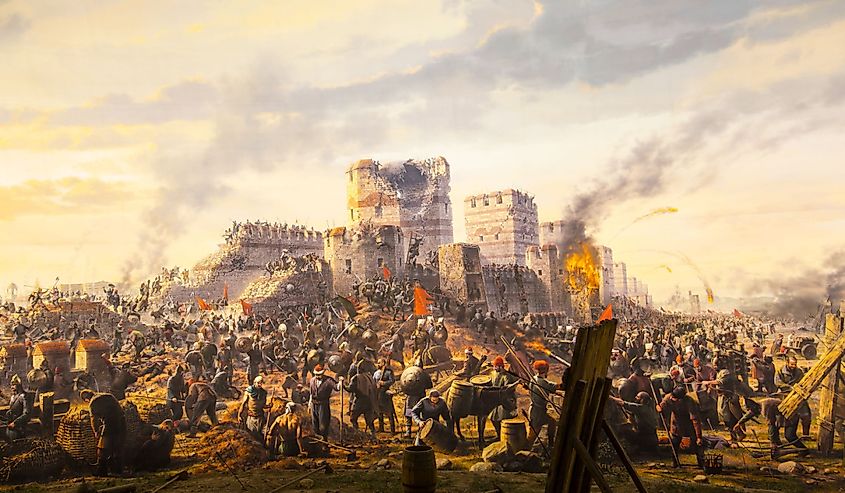
First settled in the 7th century BC, Constantinople was one of the wealthiest Medieval European cities. Located between Europe and Asia, in the modern-day Turkish city known as Istanbul, the city was a prime location for trade. Constantinople became the capital of the Roman Empire under Constantine’s rule and stood as the seat of the Byzantine Empire for 1,100 years. The city was wealthy, with riches, and beautiful architecture. Beyond its riches, the city had strength, enduring many sieges as the power of the Byzantine Empire grew and fell. In 1453 CE, Constantinople was overtaken by the Ottomans. However, this was not the end of Constantinople, the city became the capital of the Ottoman Empire.
Venice
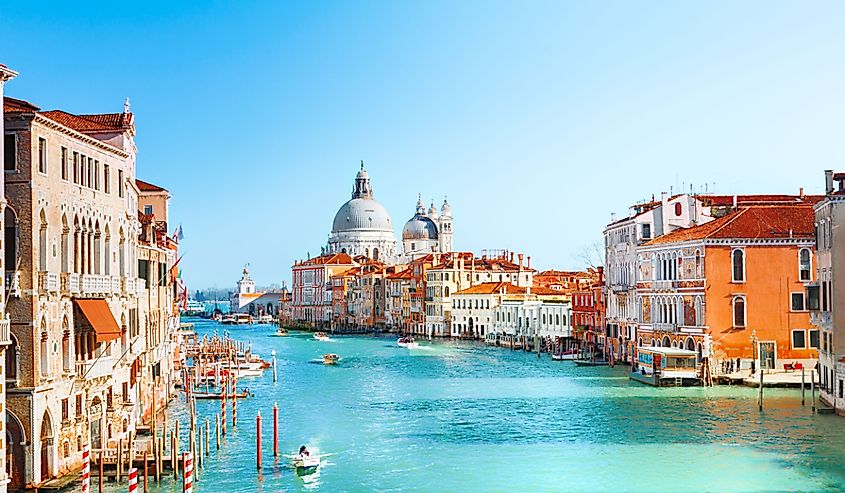
Known as a beautiful, serene city, Venice had an important economic role during Medieval times in Europe, as one of the great trading powers. In the 8th century, Venice gained independence from the rest of Europe for helping defeat Charlemagne in battle. This laid the foundation for Venice’s future trade by giving Venice the freedom to take political and military action separate from the rest of Europe.
The location of Venice was ideal in Medieval times for trade. Venice was directly between Constantinople and Western Europe, on the way to population centers. In 1082, in exchange for aiding the Byzantine Empire against the Normans, the Byzantine Emperor Alexius I Comnenus allowed Venice unrestricted trade with the Byzantine Empire. This meant Venice did not have to pay customs fees, had access to Byzantine ports, and had the protection of property rights from Byzantine authorities. Venice foreign traders were also the first foreign traders to allow buildings in Constantinople. This led to more economic power for Venice. Eventually, the city went on to create its own Empire, with colonies in the Western Mediterranean. Today Venice is a popular tourist destination.
Paris
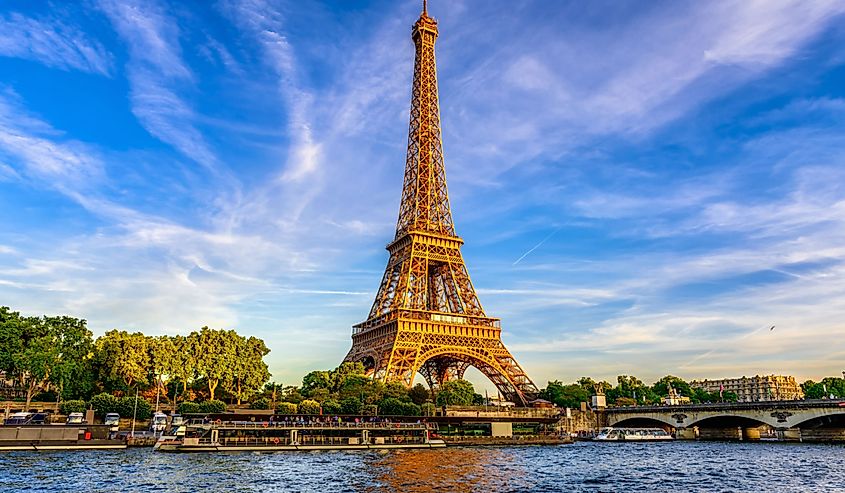
Medieval times were a prosperous era for Paris, particularly under the reign of Philip II (1179–1223). There were some disturbances to Paris’s growth. The Black Death (1348–49) and the Hundred Years’ War (1337–1453) hindered the development of Paris, along with other European cities.
However, prior to these disturbances, Paris built some of its most stunning buildings still admired to this day. These included the Notre-Dame cathedral, the Sainte Chapelle, the first covered market of Les Halles, and the Palais de la Cité. The Notre Dame cathedral was an important building in Medieval times and took over one hundred years to complete. Construction started in 1163 CE and was not completed until 1345 CE. The Sainte Chapelle was a royal chapel built in the Gothic style with extensive stained glass.
Bruges
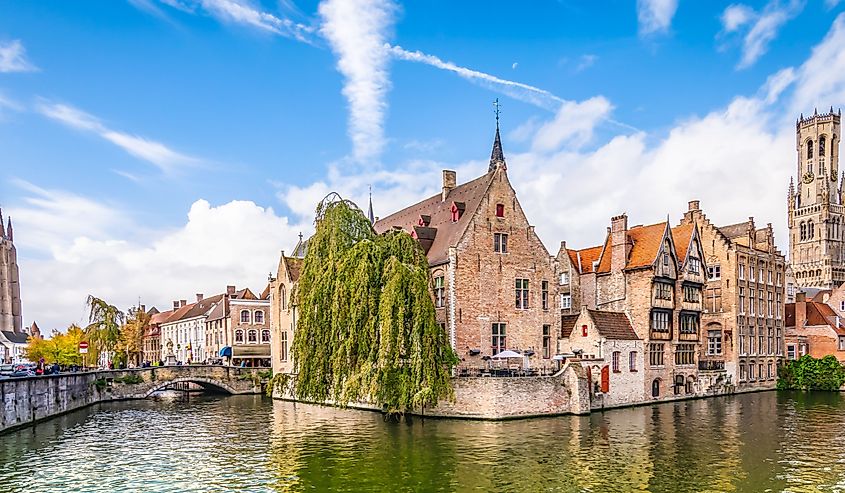
If you visit Bruges today, you will find the city filled with many 15th-century buildings, including brick houses and gothic temples, towers, and spires, all reminiscent of the city’s prosperity from the Middle Ages. Bruges’ prosperity in Medieval times was partially thanks to its location. The city was near many streams that merged and joined into a single river that flowed north. The river joined the North Sea, making the city ideal as a trade center in the Middle Ages.
Bruges had its own port and was an international center for trade, made possible by its favorable connection to the sea. Merchants from across Europe traveled to settle in Bruges because, at the time, it was the leading trade center in Northwestern Europe. The first stock exchange, called Beurs in Dutch, was even founded in Bruges. The stock exchange in the middle ages looked a lot different than the stock exchange today. A powerful family of brokers, the Van der Beurse family, held the stock exchange on a square in front of their house. Beyond being a trade center, Bruges was also a political powerhouse. The city was overseen by the Flemish Counts.
Ghent
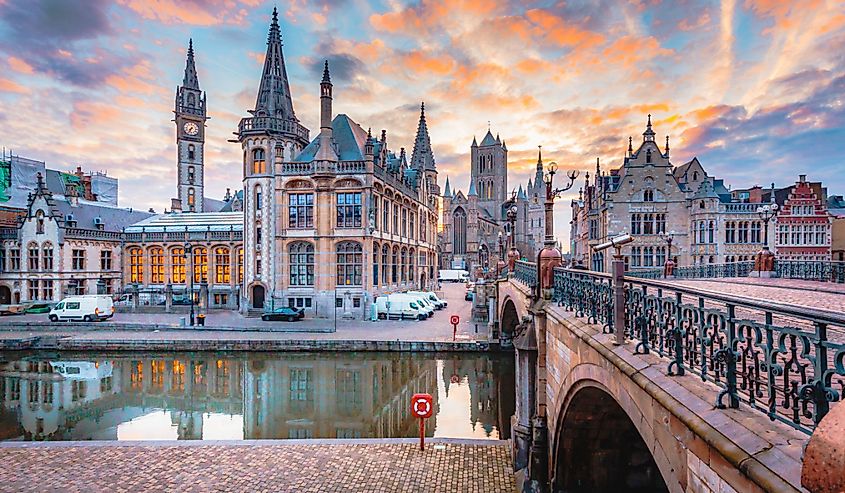
Today the Belgium city of Ghent is one of the most well-preserved cities in medieval Europe. Similar to Bruges, the city has an abundance of gothic towers still standing today. Today, the Medieval charm of the city attracts tourists. However, during the Middle Ages, from the years 1000 to around 1550, Ghent was one of the most important cities in Europe.
Throughout the 11th and 12th centuries, Ghent imported English wool to make cloth locally. This was a source of economic success for the city. During this time Philip of Alsace built the Castle of the Counts. The castle was a political center and the home of the Counts of Flanders from 1180 until 1353.
Beyond having magnificent architecture in Medieval times, Ghent was a large city. Ghent was bigger than London and the people more rebellious. During the 14th century, the 60,000 inhabitants of the city refused to give up their rights without a fight when princes and earls tried to take over the city. As a result, people in the trades and guilds gained more power in the 14th century and Ghent became more democratic.
Florence
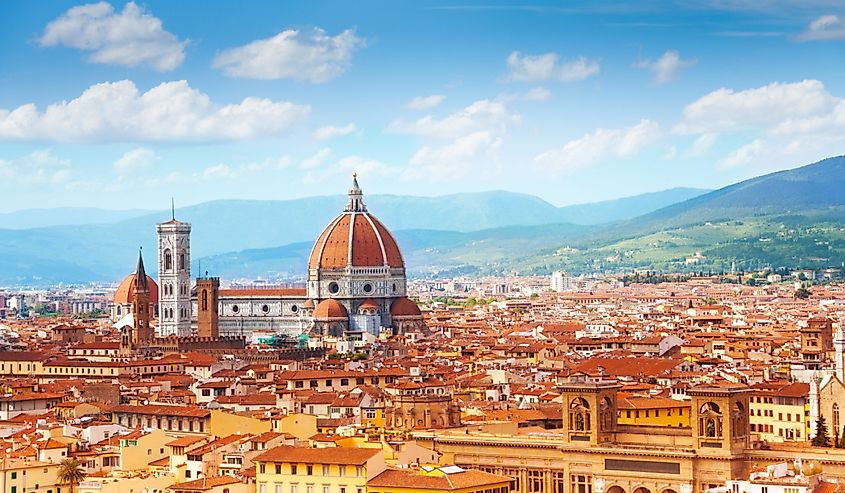
The heart of the Renaissance was Florence. However, this was only made possible through the wealth Florence acquired in the Middle Ages. During the 11th century, Florence was an important political power. Two main factions occupied the city, known as the Guelphs and the Ghibellines. The Guelphs allied with the Pope, while the Ghibellines allied with the emperor. In 1250 CE, the Guelphs conquered Florence, acquiring more autonomy from the emperor. During this time Florence expanded and became a township.
While politics was changing in Florence currently, so were the social dynamics. Merchants became a new social class. This extended beyond existing clergy, military, and civilians which brought more economic wealth and prosperity to the city.
Conclusion
Throughout history, wealth has changed hands. Different cities have been wealthy at different time periods. The cities listed here were some of the wealthiest cities in Europe in Medieval times, however, today wealth has changed hands. While many of these cities are economic centers and tourist attractions today, not all have maintained their wealth. Access to resources often determines wealth and economic success. In Medieval Europe cities close to rivers and the sea had an advantage for trade and were usually wealthier.
While Europe took the center stage for wealth in the Middle Ages, today, cities in North America and the Asia-Pacific region are some of the wealthiest in the world. Of these cities, many are in countries with official investment migration policies. These policies promote economic growth by encouraging foreign direct investment in exchange for citizenship.











